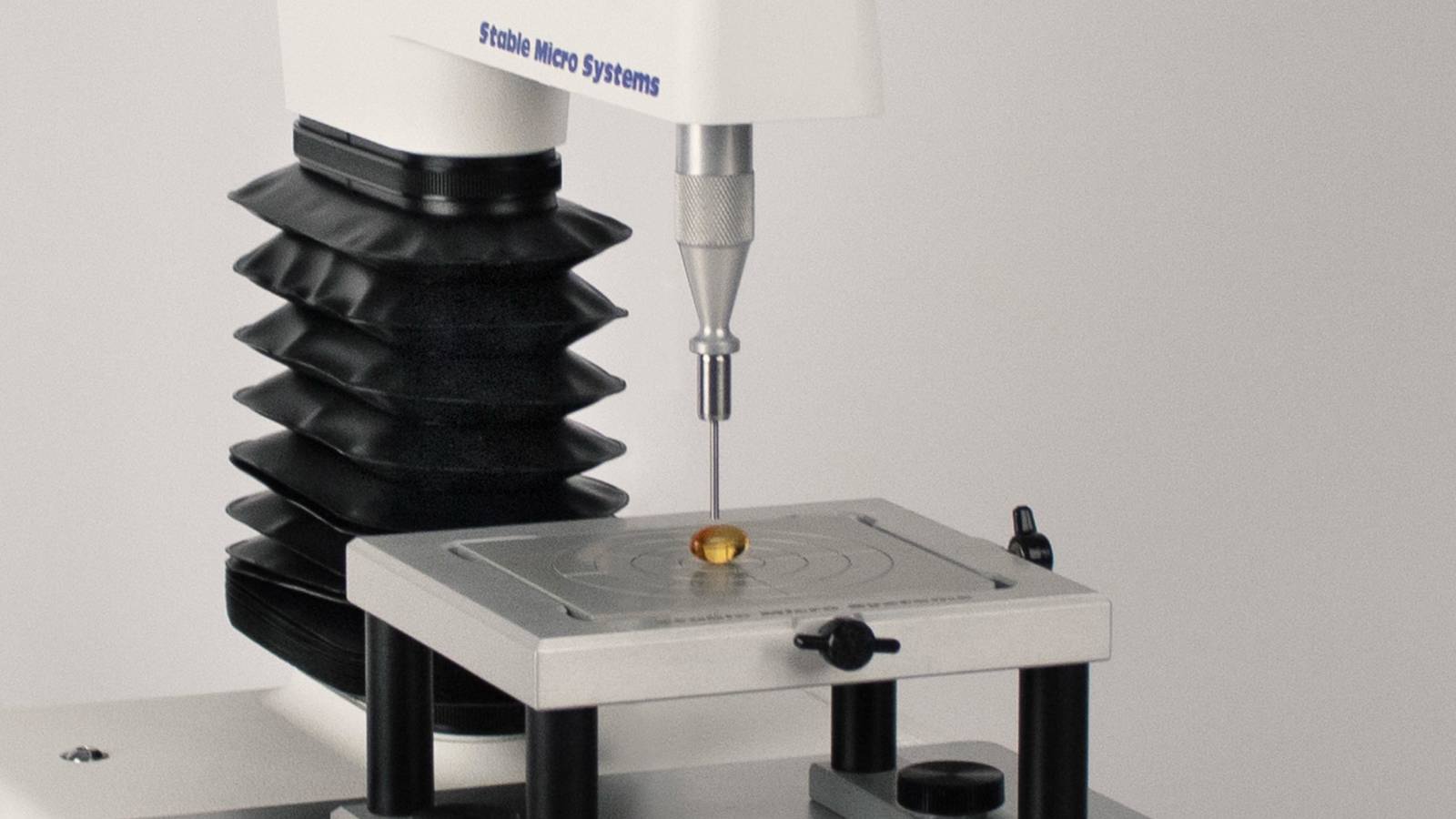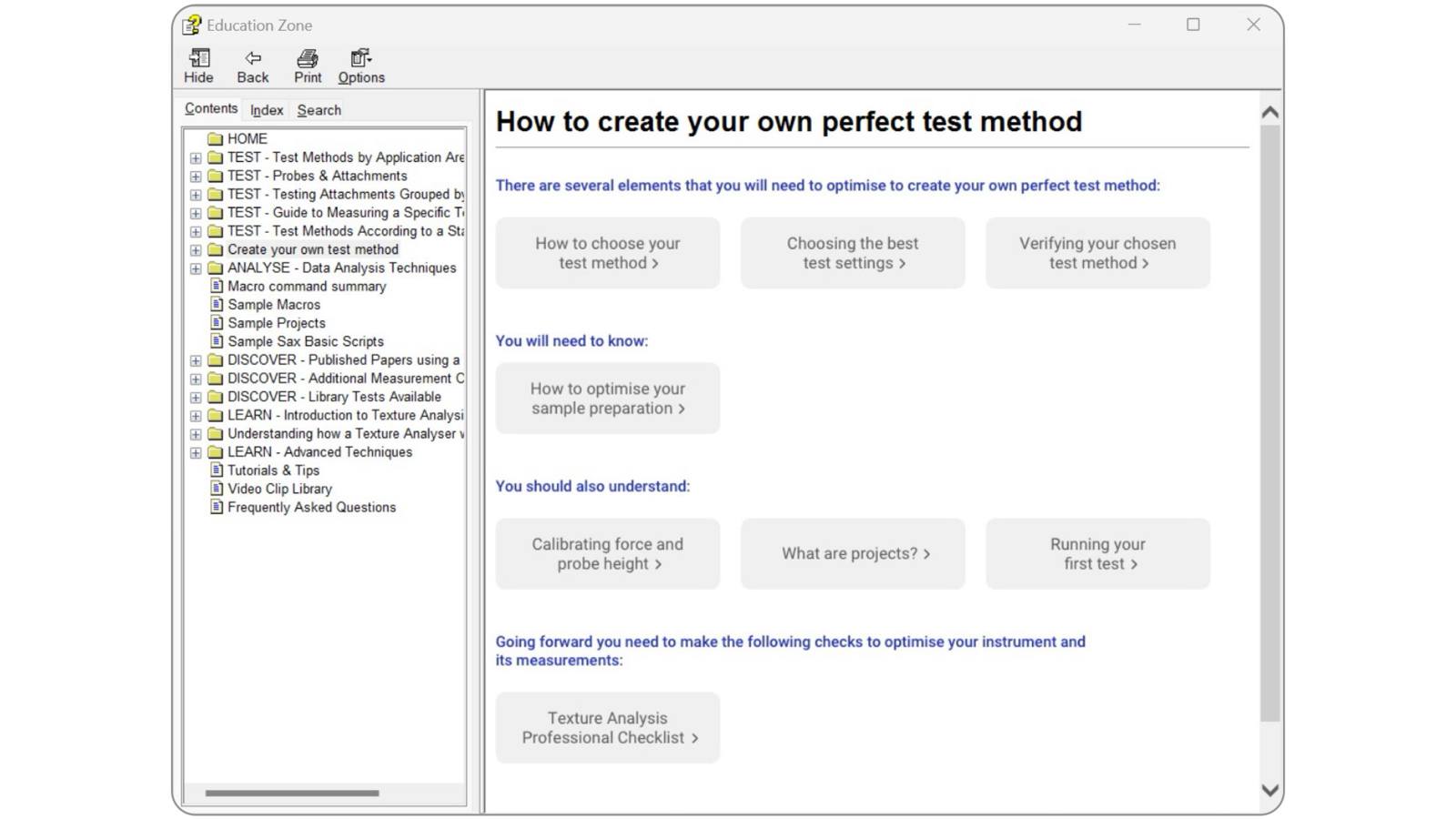
Common pitfalls in texture measurement and how to avoid them: Troubleshooting guide

Texture measurement is a crucial process in product development and quality control, especially in industries like food, pharmaceuticals, and materials science. However, achieving accurate and reliable results can be challenging due to various pitfalls.
Inconsistent sample preparation
Problem: Variability in sample size, shape, and condition can lead to inconsistent results.
Solution:
- Standardise preparation: Use templates, moulds, or cutting guides to ensure all samples are uniform in size and shape.
- Control environment: Maintain consistent environmental conditions (temperature, humidity) during preparation and testing.
Example: For a compression test on gel samples, use a mould to prepare samples with identical dimensions and store them in a controlled environment before testing.
Improper calibration
Problem: An improperly calibrated Texture Analyser can produce inaccurate measurements.
Solution:
- Regular calibration checking: Checking the force calibration of the Texture Analyser regularly using standard weights and known distances.
- Follow calibration guidelines: Adhere to the load cell installation and calibration procedures.
Example: Perform a weekly calibration check using certified calibration weights to ensure the load cell is measuring force accurately.
Inadequate environmental control
Problem: Fluctuations in temperature and humidity can affect the material properties and measurement accuracy.
Solution:
- Consistent conditions: Conduct tests in a climate-controlled environment to maintain consistent temperature and humidity levels.
- Use temperature/environment chambers: Store and test samples in environmental chambers when necessary.
Example: Use an environmental chamber set to 25°C and 50% relative humidity to store and test sensitive food samples like chocolate.
Incorrect probe or fixture selection
Problem: Using the wrong probe or fixture can lead to misleading results or damage the sample.
Solution:
- Choose appropriately: Select probes and fixtures designed for the specific test and material being analysed. If necessary, call upon our Test advice service to guide you.
- Refer to help files: Consult the Education Zone/Help files for recommendations on probe and fixture selection.
Example: For a tensile test on a plastic film, use Self-Tightening Tensile Grips designed to hold thin, flexible materials securely without slipping.
Inconsistent test settings
Problem: Variations in test speed, force limits, or other parameters can lead to inconsistent results.
Solution:
- Standardise test settings: Use the same test settings (speed, force limits, distance) for all samples in a batch.
- Document settings: Record test settings and ensure they are consistently applied across all tests and share with colleagues performing the same tests.
Example: For a compression test on bread samples, set the test speed to 2 mm/s and ensure this speed is used for all tests.
Overloading or underloading the load cell
Problem: Applying forces outside the load cell’s capacity range can damage the equipment or produce inaccurate results.
Solution:
- Check capacity: Ensure the load cell’s capacity range matches the expected forces for the test.
- Use appropriate load cells: Switch to a load cell with a suitable capacity range if necessary.
Example: For testing the hardness of a dense material like rubber, use a load cell with a higher capacity range to prevent overload.
Poor data interpretation
Problem: Misinterpreting the data can lead to incorrect conclusions about the material properties.
Solution:
- Training: Ensure operators are trained in data interpretation and understand the significance of different curve features.
- Software tools: Use the correct data analysis software tools for detailed analysis and visualisation of the data.
Example: For a texture profile analysis (TPA), ensure the operator understands how to interpret parameters like hardness, cohesiveness, and springiness from the force-distance curve.
Practical tips for reliable texture measurement
- Consistent sample handling: Handle samples gently and consistently to avoid altering their properties.
- Multiple replicates: Test multiple samples from the same batch to account for natural variability.
- Detailed documentation: Keep detailed records of sample preparation, test parameters, and environmental conditions.
- Regular maintenance: Perform regular maintenance on the Texture Analyser to ensure it operates correctly.
We have also prepared a Texture Analysis Professional checklist for you to consider:
The instrument is regularly calibrated
- To be confident of your test results and maintain the accuracy of your instrument, it is vital that you should regularly calibrate and check your force measurement.
The tools you are using are well maintained
- It is important that test cells and probes are maintained in good condition and that any wear or damage is rectified.
- You will need to regularly check probes and fixtures to ensure they are not chipped, bent or blunt which would lead to errors. Probes that require particular attention are cones and blades as the tips/edges can be knocked off and sharpness deteriorate after repeated use of e.g. craft knife. For the assessment of blades, you may wish to find a suitable repeatable substrate which you can test to make sure you are obtaining the same value. If not, if may be time to change your blade. If blade sharpness and replacement is of importance to your product testing, then you may wish to check that you have the most suitable blade for your testing. Get more advice on choosing the most suitable blade.
- Misalignment of a probe/cell when attached to your instrument may introduce additional frictional resistance and give misleading results.
Sample preparation is being performed consistently
- Remember, particularly when performing a compression test that the dimensions of your sample are crucial to the repeatability of your results. This is of particular relevance when preparing small samples where a small change in product dimensions can produce a large surface area change – as opposed to a relatively small product dimension difference in a large sample.
The software you are using is up to date
- Our software is updated regularly with new features and operating system compatibilities and is available to download free of charge. Updating your software will also update your availability of new sample projects and application studies. To check if there is a more up to date version of software ready to download click on ‘Help – About’ (in Exponent Connect software) and see if a new version number is available.
You are cleaning your probes and fixtures sufficiently between tests
- This is of particular relevance when you are performing adhesive tests as the accuracy of this measurement relies on very clean probes. Any residue remaining on a probe surface will affect the test result and any product stuck to a probe or fixture in any previous tests has the potential to affect the correct starting point of the next test sample.
You’ve scouted out the other possible tests, probes and fixtures
- Make sure you are using the best available methods for measuring the properties of your products. No other texture analyser manufacturer develops their range of tools available for texture analysis as frequently as we do – new methods, new analytical tools, new probes/fixtures etc.
You’re connected to us on LinkedIn
- Our LinkedIn page has daily updates on texture analysis news and research as well as updates on new products and developments from Stable Micro Systems. Follow us to stay in the loop
Achieving accurate and reliable texture measurement results requires careful attention to sample preparation, calibration, environmental control, probe selection, test parameters, and data interpretation. By understanding and addressing common pitfalls, you can enhance the consistency and reliability of your texture analysis.
This information is also contained within the Education Zone of Exponent Connect software:

Alternatively, why not request ‘Optimising your texture analysis test method - the ultimate guide' to assist your understanding.
If you have lost it, request a .pdf 167 page in-depth manual to be sent to you.














